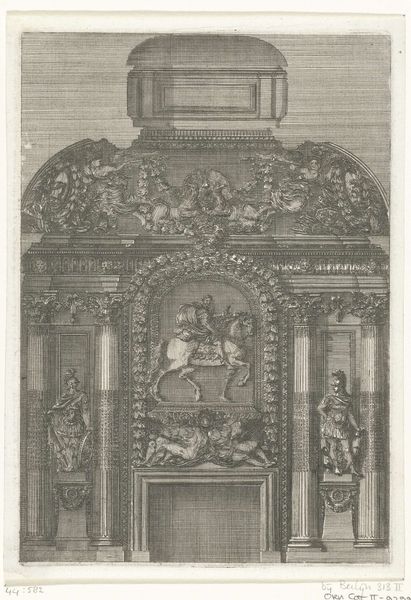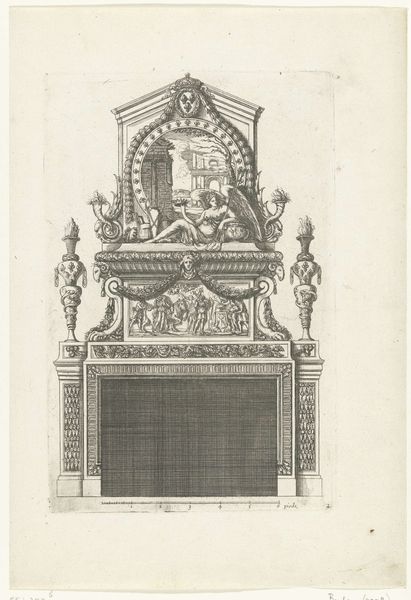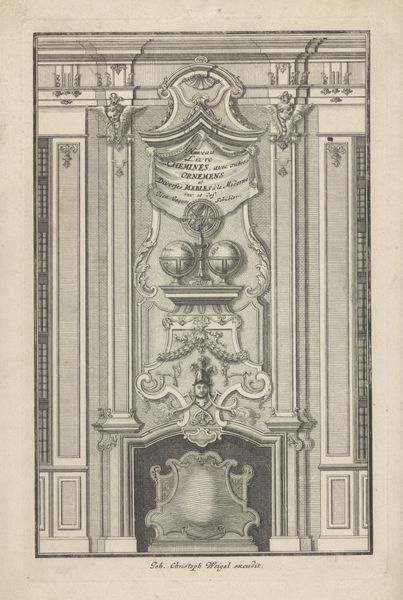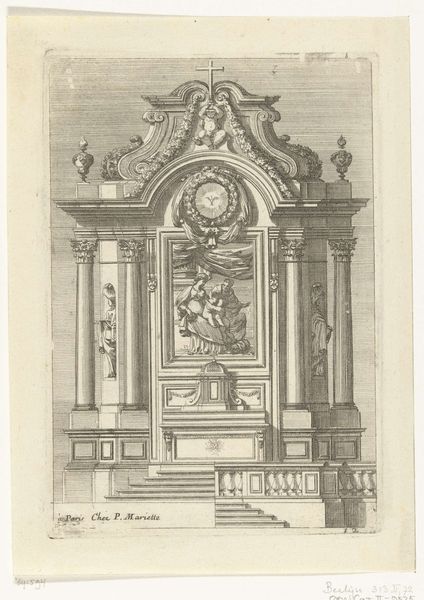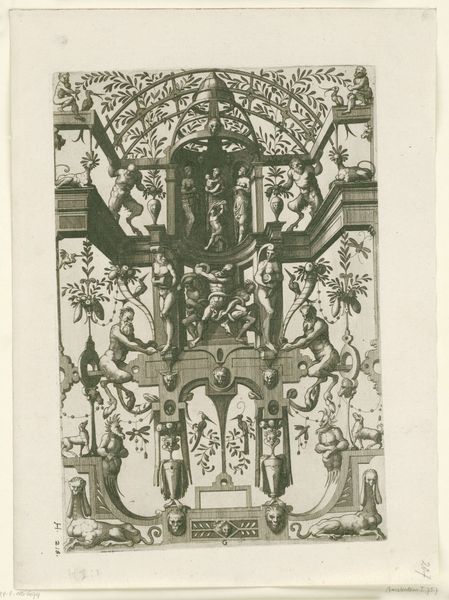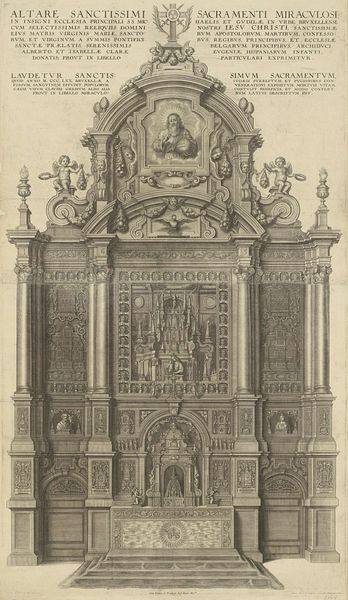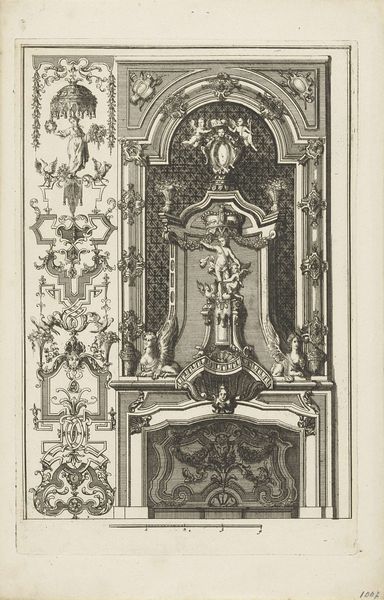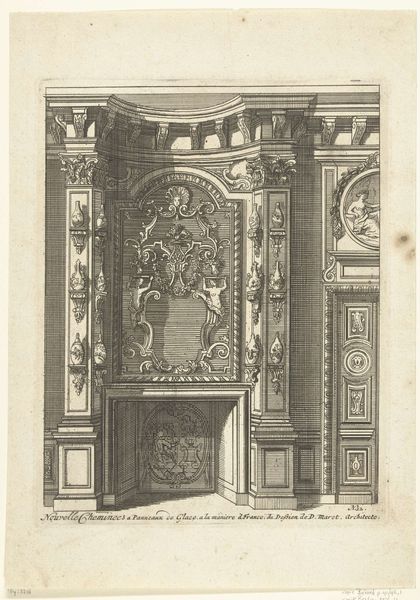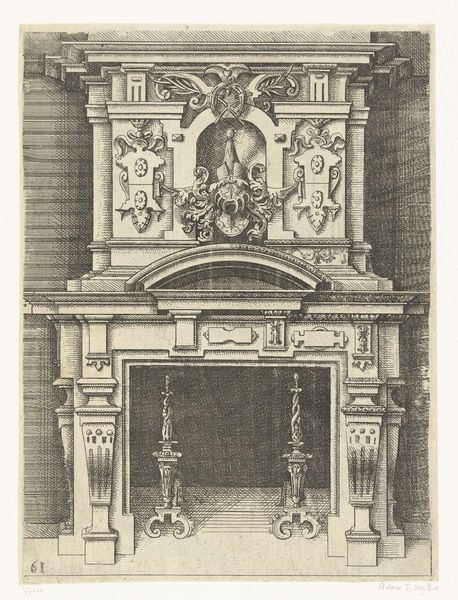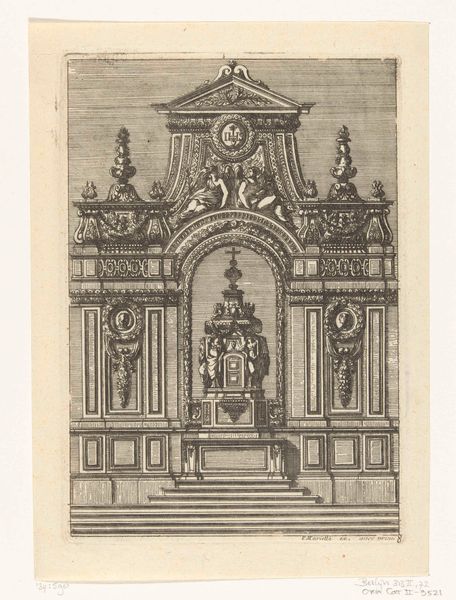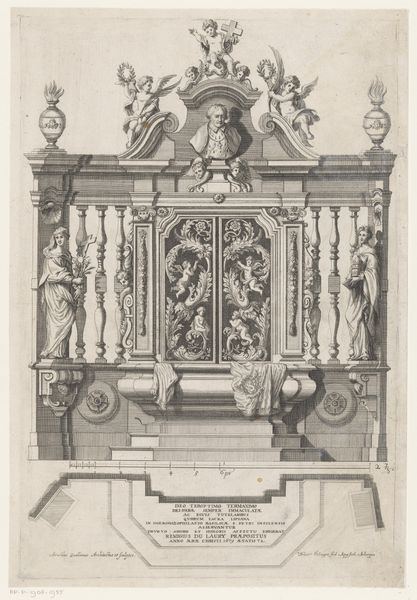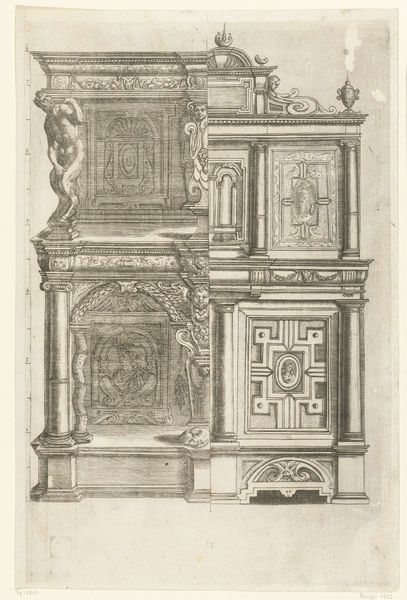
Glasraam 3 in de Sint-Janskerk te Gouda: De Dordtse stedenmaagd 1738 - 1754
0:00
0:00
pietertanje
Rijksmuseum
print, engraving
#
allegory
#
baroque
# print
#
figuration
#
line
#
history-painting
#
engraving
Dimensions: height 641 mm, width 307 mm
Copyright: Rijks Museum: Open Domain
Curator: Here we have Pieter Tanjé's "Glasraam 3 in de Sint-Janskerk te Gouda: De Dordtse stedenmaagd", an engraving made between 1738 and 1754. Editor: Immediately, I’m struck by the elaborate architectural framework, the precision of the line work. It has a remarkable sense of order and classical balance. Curator: Indeed. It depicts the allegorical figure of Dordrecht as a city maiden. Consider how she embodies the virtues and ideals associated with the city. She sits enthroned, a book in her hand, laurel wreath raised—icons of knowledge and victory, if you will. The sword beside her suggests sovereignty, perhaps justice. Editor: Absolutely. And what about the placement of the heraldic shields? See how they frame the central figure and are spaced in regular rhythmic intervals, echoing the Doric columns that bracket her throne. It’s all very carefully calibrated to evoke power and stability. Curator: The shields definitely speak to alliances and the city’s prominent status. Note, too, the text below, which is set within a baroque cartouche. In it we see a Latin inscription—all meant to elevate the city and emphasize its role in matters of religion and governance. What does this emphasis communicate to you? Editor: I see how the linear precision reinforces that authority. Yet, the baroque flourishes give a sense of dramatic ornamentation. Those juxtaposed stylistic features certainly signal a distinct early modern temperament. It also gives a dynamism against the engraving's very flat perspective. Curator: The engraving would originally serve to commemorate the new stained-glass window commissioned for the church in Gouda—an emblem of civic pride and faith made permanent through printmaking. We can find links from Dutch republicanism, which looked to such ancient imagery for ideas of civic virtue and autonomy. Editor: So, on the surface, the arrangement speaks of reason, civic duty and controlled splendor, but with the more ornate embellishments woven in—a subtle complexity is evident. Curator: Exactly. It’s fascinating to see how Tanjé melds allegorical form with social and political aspiration. Editor: Yes, and it is in part this merging of different qualities, different motifs, and of course, that sharp definition that leaves a lingering resonance.
Comments
No comments
Be the first to comment and join the conversation on the ultimate creative platform.
